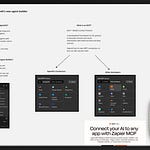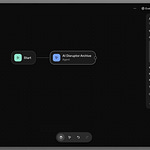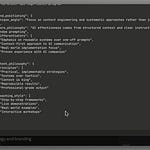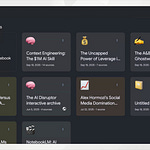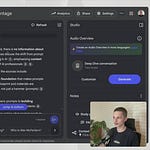Most people are feeding their AI scattered documents and getting generic outputs. Here's the structured approach that puts you in the top 1% of AI users—and why it's the foundation of every professional AI writing system.
📌 Key takeaways
Convert all your context documents to JSON format for dramatically better AI parsing and output quality
Your Voice DNA is the fundamental building block of any AI writing system—capturing personality over phrases
My 4-layer AI WriterOps system eliminates mega-prompts and reduces rewriting to 5% or less
Working in projects (not random chats) is non-negotiable for professional AI content creation
Everything builds directly in Claude or ChatGPT—no external tools needed
The problem with how 99% of people use AI
You've been conditioned to think AI is amazing at natural language. Just throw documents at it. Give it PDFs. Tell it whatever. It'll figure it out, right?
This mindset is crushing your productivity. It's why you're rewriting 50% or more of what comes out. It's why your AI content sounds generic despite having tons of context uploaded.
The reality: Without structured intelligence, AI is just sophisticated autocomplete. But with the right system? It becomes a professional content operator that thinks like you do.
What is structured AI input
Instead of feeding your AI this: "I'm a marketing consultant who helps SaaS startups with content strategy. I create blog content, email sequences and landing pages. My clients are usually early stage startups..."
You structure it into JSON format that looks like this:
{
"professional_profile": {
"role": "Marketing Consultant",
"specialization": "Content Strategy for SaaS Startups",
"content_types": ["blog_content", "email_sequences", "landing_pages"],
"target_clients": "early stage startups"
}
}How to convert any document to JSON in 30 seconds
You don't need to be technical. You don't need to write JSON manually. Here's the exact process:
Copy your existing content/document
Paste this prompt into Claude: "Convert the following information into clean structured JSON format that an LLM can easily parse and reference"
Paste your content below the prompt
Download the JSON file directly from Claude
That's it. Claude does everything for you.
💡 Key Insight: Once you start structuring your context this way, you'll see immediate improvements in how accurately AI pulls and uses your information. The difference is night and day.
Your first context asset
The fundamental building block of any AI writing system isn't prompts—it's your Voice DNA. This captures your personality, tone, and speaking patterns in a way AI can consistently reproduce.
What makes Voice DNA different
Most people try to capture voice with lists of phrases: "Use these words, avoid these words."
That's backwards. You end up with repetitive phrases appearing over and over. The same catchphrases. The same transitions.
Instead, Voice DNA focuses on:
Voice temperatures (formality: 3/10, directness: 9/10, energy: 8/10)
Persona snapshots that capture who you are, not just what you say
Pacing and structure patterns rather than specific phrases
Core tone descriptors that guide overall feel
How to extract your Voice DNA
Take the Voice DNA Extractor prompt (provided free at the end of this text) and run 3-5 samples through it:
Writing samples (newsletters, blog posts, social posts)
Transcripts from videos or meetings
Speaking notes or recorded conversations
Even voice dictation if you have nothing else
The extractor analyzes these samples and creates a JSON Voice DNA document that becomes a permanent part of your AI system.
Pro tip: If you're building for a client with no samples, run their competitors' content through the extractor to establish a baseline, then customize from there.
Taking Action
Start immediately: Convert one context document to JSON today
Build your Voice DNA: Run 3-5 samples through my prompt.
Create a project: Stop working in random chats—use Claude or ChatGPT projects
Structure everything: Every piece of context should become a JSON asset
Test the difference: Run the same content request with and without structured context




